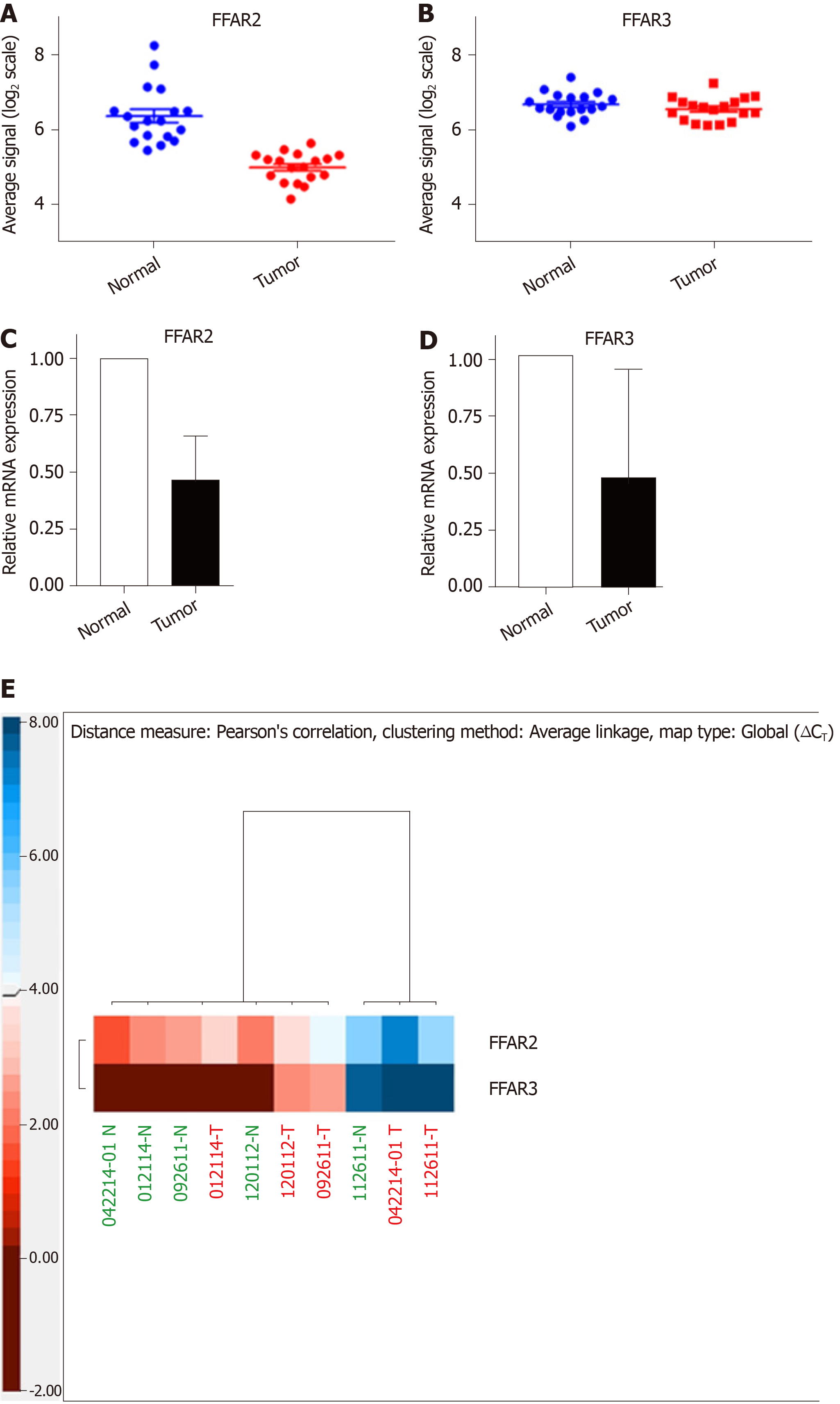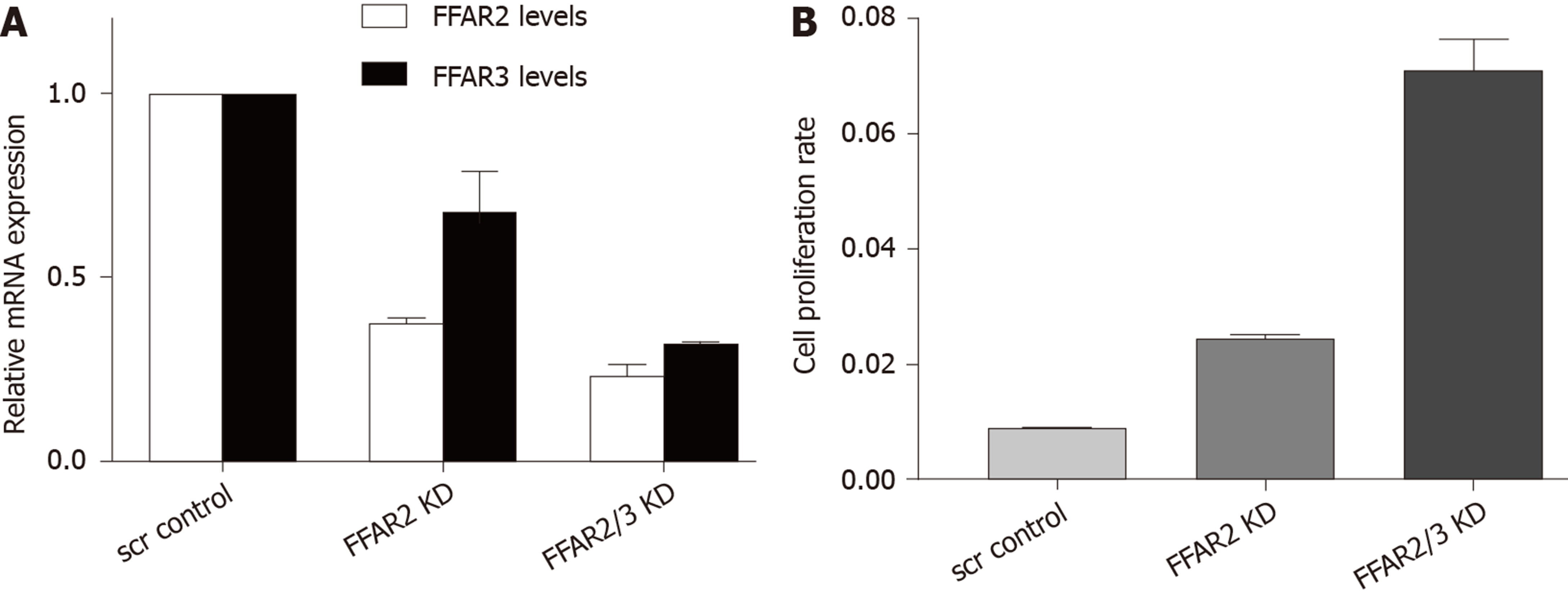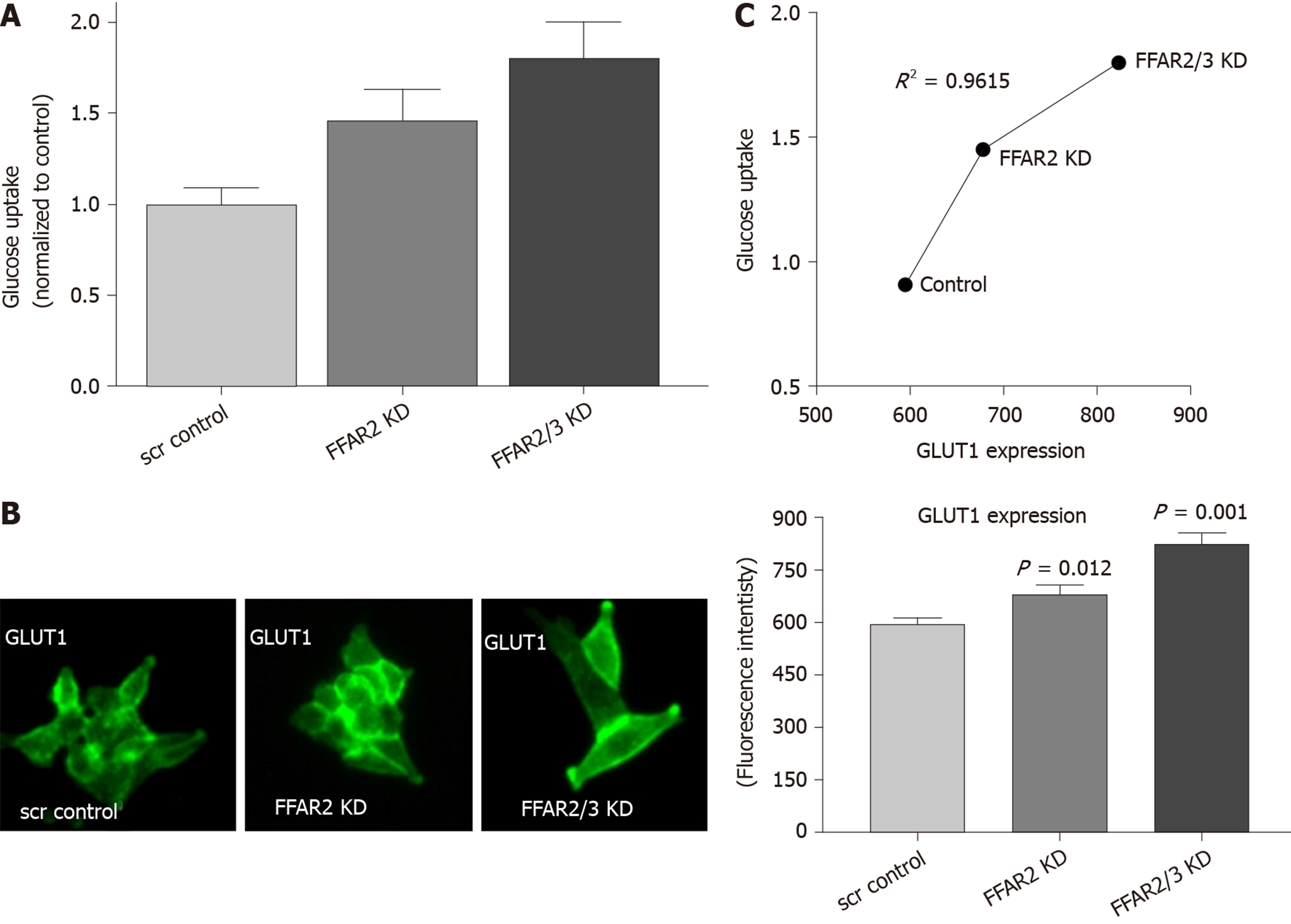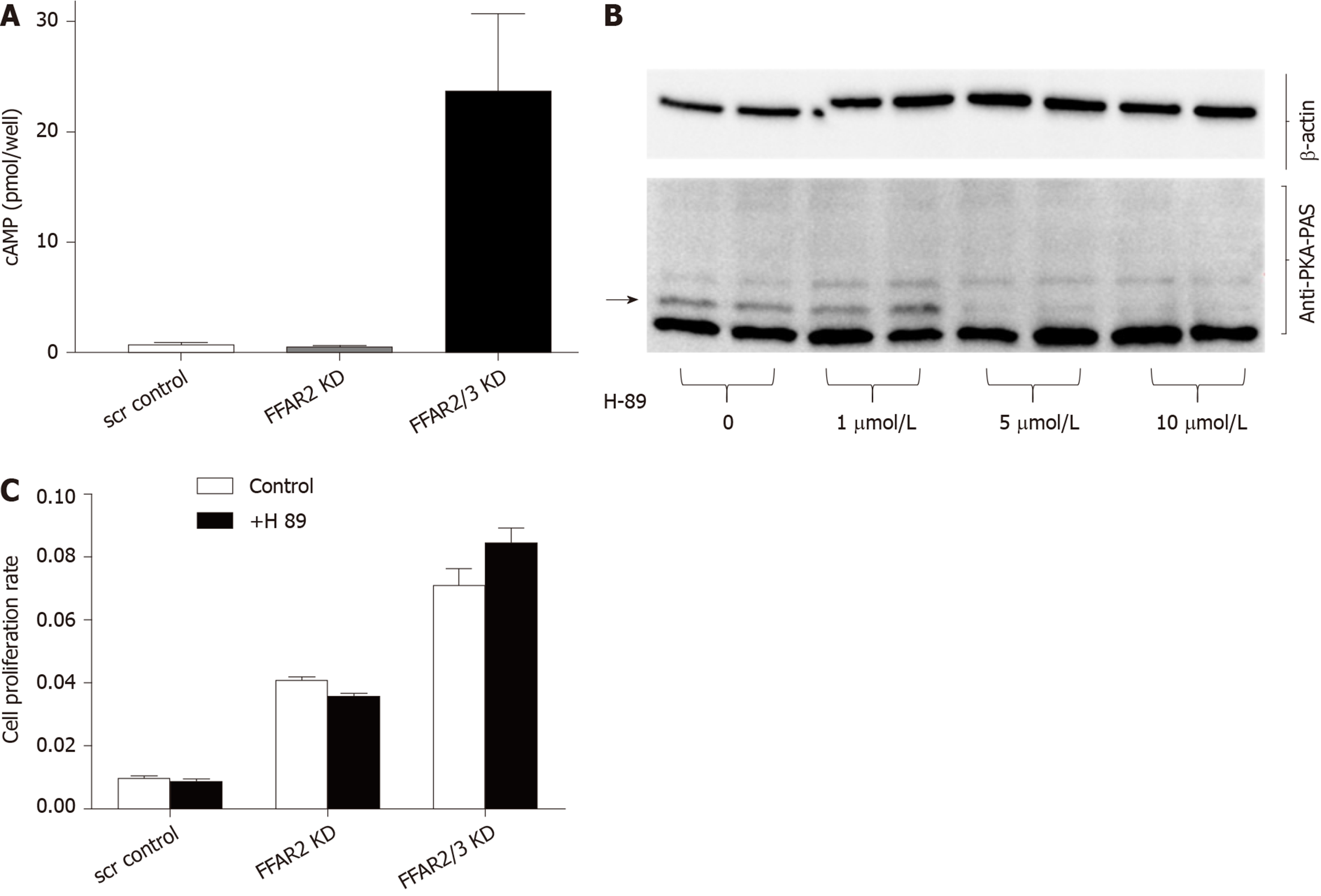Copyright
©The Author(s) 2020.
World J Gastrointest Oncol. May 15, 2020; 12(5): 514-525
Published online May 15, 2020. doi: 10.4251/wjgo.v12.i5.514
Published online May 15, 2020. doi: 10.4251/wjgo.v12.i5.514
Figure 1 Gene expression analysis of free fatty acid receptor 2/3 genes in patients diagnosed with colorectal cancer.
A: Microarray analysis of gene expression of free fatty acid receptor (FFAR) 2 in tumor-normal paired tissues; B: Microarray analysis of gene expression of FFAR3 in tumor-normal paired tissues; C: Quantitative polymerase chain reaction (QPCR) gene expression analysis of FFAR2 in tumor-normal paired tissues; D: QPCR gene expression analysis of FFAR3 in tumor-normal paired tissues; E: Heatmap representation of FFAR2 and FFAR3 genes expression using QPCR in tumor-normal paired tissues. Color intensity ruler is given to represent Threshhold cycle (Ct) values with a range of -2 to 2 which is inverse of expression level. More red means less Ct and hence more expression. More blue reflects More Ct value suggesting less expression. Each bar represents an average of at least two independent experiments with multiple technical replicates in each experiment. Significance was set for a P value of < 0.05 (paired t test). FFAR: Free fatty acid receptor; Ct: Threshhold cycle.
Figure 2 Increased proliferation of colorectal cancer cells in single free fatty acid receptor 2 and double free fatty acid receptor 2/3 knockdown colorectal cancer cells.
A: Relative mRNA expression in single free fatty acid receptor (FFAR) 2 and double FFAR2/3 knockdown clones compared to scrambled control; B: xCELLigence proliferation assay of FFAR2 and FFAR2/FFAR3 double knockdown clones. Each bar represents an average of at least two independent experiments with 2 technical replicates in each experiment. Significance was set for a P value of < 0.05. FFAR: Free fatty acid receptor; KD: Knockdown.
Figure 3 Single knockdown of free fatty acid receptor 2 and double knockdown of free fatty acid receptor 2/3 increases glucose uptake and glucose transporter 1 expression in colorectal cancer cells.
A: Glucose uptake in single free fatty acid receptor (FFAR) 2 and double FFAR2/3 knockdown clones compared to control; B: Immunofluorescence for glucose transporter 1 in single FFAR2 and double FFAR2/3 knockdown clones compared to scrambled control; C: Correlation plot between glucose transporter 1 immunofluorescence and glucose uptake. R2 value close to 1 suggest a good correlation. Each bar represents an average of at least two independent experiments with multiple technical replicated in each experiment. Significance was set for a P value of < 0.05. FFAR: Free fatty acid receptor; KD: Knockdown; GLUT1: Glucose transporter 1.
Figure 4 Increased cyclic adenosine monophosphate levels in double free fatty acid receptor 2/3 knockdown colorectal cancer cells.
A: Cyclic adenosine monophosphate level in single free fatty acid receptor (FFAR) 2 and double FFAR2/3 knockdown clones compared to scrambled control; B: Western blot analysis of effect of different doses of H89 in inhibiting phosphorylation of protein kinase A. Dose of 5 μmol/L and 10 μmol/L showed complete inhibition; C: Cell proliferation of single FFAR2 and double FFAR2/3 knockdown clones compared to scrambled control with and without protein kinase A pharmacologic inhibitor. FFAR: Free fatty acid receptor; KD: Knockdown; cAMP: Cyclic adenosine monophosphate; PKA: Protei kinase A.
Figure 5 An illustration depicting the possible role of free fatty acid receptor 2 and 3 that results into increased cell proliferation.
This figure was generated through the use of IPA (QIAGEN Inc., https://www.qiagenbioinformatics.com/products/ingenuity-pathway-analysis). FFAR: Free fatty acid receptor; GLUT1: Glucose transporter 1; cAMP: Cyclic adenosine monophosphate; PKA: Protei kinase A.
- Citation: Al Mahri S, Al Ghamdi A, Akiel M, Al Aujan M, Mohammad S, Aziz MA. Free fatty acids receptors 2 and 3 control cell proliferation by regulating cellular glucose uptake. World J Gastrointest Oncol 2020; 12(5): 514-525
- URL: https://www.wjgnet.com/1948-5204/full/v12/i5/514.htm
- DOI: https://dx.doi.org/10.4251/wjgo.v12.i5.514













